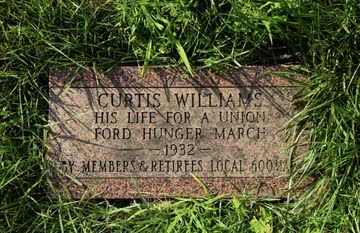The Ford Hunger March — also known as the Ford Massacre — served as a turning point in the story of organized labor in Detroit and across the U.S. The incident helped catalyze the creation of the United Auto Workers. But it was scarcely memorialized locally. For decades, Ford and the UAW did little to acknowledge the incident. The half-acre tract in Southwest Detroit where demonstrators gathered for the march before being brutalized sat empty and neglected. Only a lone placard describing the dire circumstances leading to the protest and its violent conclusion marked the old bascule bridge the marchers had crossed.
That changed on Oct. 22, when the new Fort Street Bridge Park officially opened. Featuring a rain garden, plaza and symbolic sculpture, the park represents the culmination of nearly a decade of grassroots efforts by academics, union members, industry representatives and local activists determined to pay homage to the March. Not only does it formally acknowledge an oft-ignored milestone in labor history in a moment of resurgent interest in labor rights, it represents another step in the ongoing revitalization of a post-industrial city.

